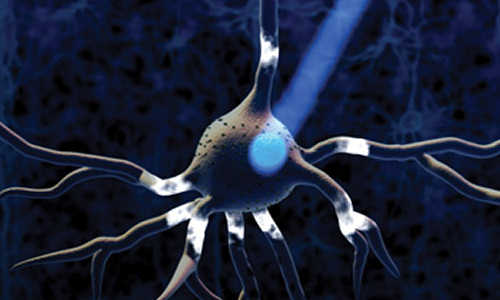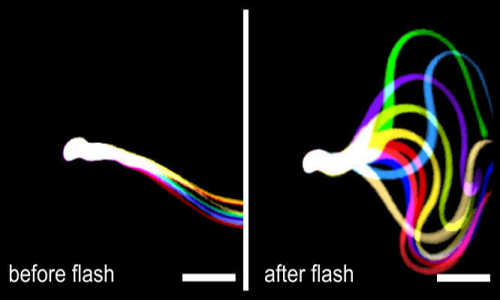Optogenetics is one of the hottest tools in biomedical research today, a method that uses gene therapy to deliver light-sensitive proteins into specific cells. This new tool allows researchers to interact with a single cell or a network of cells with exquisite precision. Whereas imaging and other technologies allow researchers to watch the brain in action, optogenetics enables them to influence those actions.
Photo Credit: Ed Boyden’s Lab
With this innovative technique, it is now possible to record neuronal activity during and between seizures, and to test causality and identify potential new therapeutic approaches. Further research could lead to the development of new therapies that could aid more than 300,000 Americans who live with uncontrolled seizures.
A new study that will be featured at the American Epilepsy Society’s (AES) 68th Annual Meeting examines the reliability of optogenetics as a method of intervention of temporal lobe seizures, and the role the cerebellum may play in hippocampal function and seizure reduction. Researchers at the University of California Irvine utilized custom-designed software to detect and record chronic, spontaneous seizures in the hippocampus of a mouse model of temporal lobe epilepsy.
Their findings show that when brain cells in the cerebellum were activated by optogenetic lasers in the lateral cerebellar cortex, the duration of temporal lobe seizures decreased significantly. The time between seizures did not dramatically change, indicating the absence of a rebound effect. When light was instead delivered to the midline cerebellum, targeting the vermis, not only were seizures shorter, but there was a significant prolongation of the time between seizures. This reaction far outlasted the duration of the applied light, and was unique to application in the vermis. Optogenetic inhibition, rather than excitation, of brain cells in the cerebellum produced no significant effect on time to next seizure, indicating that activation of these cells is required to see this unique effect on seizure frequency.
“These findings are really exciting,” said Dr. Esther Krook-Magnuson, Postdoctoral Scholar at the University of California Irvine. “They demonstrate that two brain structures not typically thought to interact can powerfully influence each other, and that the cerebellum could be a good target for intervention in epilepsy.”
The data collected from this study shows the incredible potential for developing novel optogenetics treatments for epilepsy and provides strong support for further research.
Story Source:
The above story is based on materials provided by American Epilepsy Society (AES).





